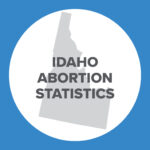Q&A with the Scholars: Analyzing Pain-Capable Laws and Fetal Disposition

Kristi Burton Brown, J.D., is an attorney focusing on First Amendment and sanctity of life issues. She is licensed in the State of California and admitted to the 10th Circuit Court of Appeals. Kristi has worked on pro-bono projects for Life Legal Defense Foundation, Live Action, Child Evangelism Fellowship’s parent organization, and Alliance Defending Freedom. She currently works as a journalist and editor for Live Action News, and is an op-ed contributor to The Christian Post. Brown is one of our nearly 40 associate scholars. In this interview, she discusses the legal defensibility and value of pain-capable abortion prohibitions, as well as fetal disposition and laws governing that practice.

You recently testified in support of a Missouri bill that would prohibit abortions after the unborn child has reached a pain-capable gestational age. What legal defense do you offer for these laws when testifying in support of them? How do these laws fit into the Supreme Court’s existing abortion law and what legal challenges are they likely to face?
Brown: There are at least two significant legal defenses for pain-capable laws. First is the legitimacy of the state’s interest in promoting policies that respect human life. The U.S. Supreme Court most recently recognized this valid interest in Gonzales v. Carhart (2007). The Court specifically recognized as legitimate and lawful the “State’s interest in promoting respect for human life at all stages in the pregnancy.” The specific reality of pain during abortion for the unborn child, combined with the facts of modern science that tell us this child is a human being, leads to the conclusion that by passing these laws, the state is promoting a respect for human life.
Secondly, Roe v. Wade (1973) and Planned Parenthood v. Casey (1992) laid out a viability standard that allows states to ban most abortions once the unborn human being reaches an age at which surviving outside the womb is possible. Modern medicine points to 22 weeks gestation (which is equal to 20 weeks fetal age measured from conception) as an age at which a significant number of babies can survive. Even the Washington Post reported: “That babies can survive at 22 weeks is not a new finding; it has been known for 15 years…” A 2015 study in the New England Journal of Medicine reports that 25 percent of babies born at 22 weeks gestation would survive if “actively treated in a hospital.” Planned Parenthood v. Casey recognized that medical science is continually advancing and that viability would continue to move earlier and earlier as medicine advances. While the viability standard is not the ideal measurement of the value of human life, it has been recognized by Supreme Court precedent, and, due to modern medical advances, can be used to argue in favor of pain-capable bills.
What potential do you think these 20-week pain-capable laws have as a legal strategy in terms of moving the needle in the direction of more protection for the unborn under the law?
Brown: Pain-capable laws, while not perfect (since they do not always address the inherent right to life of the unborn child) do advance the needle because they provide another window through which society can see the humanity of the unborn child. Discussing pain in the context of abortion leads to the question: What is abortion? When society starts asking this question and honestly investigating what—and who—is involved in an abortion, we will see the absolute inhumanity and tragic violence involved.
These laws provide a platform for videos like the ones at www.AbortionProcedures.com to be shown to Americans. These videos are non-graphic, animated videos, narrated by a former abortion doctor. Many personal stories reveal how these videos and similar facts about abortion have changed the minds of pro-choice people as they face what abortion really is and grasp the violence and pain it inflicts on innocent human beings. Pregnancy centers have successfully used these videos to help women see what abortion really is as well, and this has resulted in the cancellation of abortion appointments and the saving of innocent lives. A discussion of pain forces us to face the inherent humanity in the child who is experiencing pain.
You also recently testified in support of another Missouri bill that would, among other things, prohibit the donation or sale of fetal tissue resulting from abortion for any purpose. You discussed this problem in your recent paper for the Charlotte Lozier Institute as well. In summary, what is the scale of this problem of fetal disposition, and what are some of the most egregious practices of the abortion industry with respect to fetal remains?
Brown: Fetal disposition is another issue that highlights the inhumanity of abortion and the humanity of the child who is being disposed of. When states allow abortion facilities to dispose of abortion’s “leftovers” as they see fit, we literally find buckets of tiny arms, legs, and heads—swimming in their own blood—being stored in janitor’s closets in abortion clinics. We hear admissions from clinic owners that they dump bags of baby body parts down their sinks and let the disposal grind up these real pieces of humanity, dumping them into our sewer or water systems. It’s easy to be disgusted by this reality, but once again, what it forces us to face is the humanity of the children we are tearing apart and grinding up.
Fetal disposition also involves the issue of the trafficking of baby body parts. We’ve seen admissions by abortionists on tape, acknowledging that they modify their abortion procedures to deliver “intact” babies who can more easily be parted out and sold. We’ve also heard allegations that some of these “intact” babies survive their abortions and are killed outside the womb so their parts can be harvested. Delving into these claims forces states and citizens to deal with what abortion is really doing to the most innocent human beings among us.
What are the most important changes that need to be made to state laws to curtail these dehumanizing practices?
Brown: Regarding fetal disposition, I outline several key recommendations for change in my Charlotte Lozier Institute paper. I think the most important changes include limiting disposition of fetal remains to individual burial or individual cremation, requiring regular and unexpected inspections of facilities that perform abortion by states, requiring the mother’s written consent to the method of disposition for her child, and limiting the number of fetal remains and the time that the fetal remains can be stored at facilities that perform abortion. My paper goes into more detail.
These changes would, as I told legislators in Missouri, allow states “to respect the lives of children who are aborted and acknowledge, in a small way, after their deaths, that they were human beings.” This doesn’t save their lives, but it once again brings us back to their humanity and provides a way for the state and the mothers to consider what this humanity should require of us.
Why are you pro-life? If you had 60 seconds to explain to someone why you have pursued the work that you have throughout your career, what do you tell them?
The issue of life is an issue of justice. Every human being is created inherently valuable. From the moment of our first beginnings, we are endowed with the most basic right to life. We cannot truly view other human beings as valuable if we don’t recognize their worth and inherent dignity from their earliest moments. I also believe that the strong members of society ought to speak up for the most vulnerable instead of trampling over them. As a woman, I have never believed that my success can only rest on the deaths of my children. Strength comes—to women, to families, and to societies—when we embrace our children and pursue justice and equality for every human being, without regard for how developed or dependent they may be.
Brown’s full biography can be found here.

























